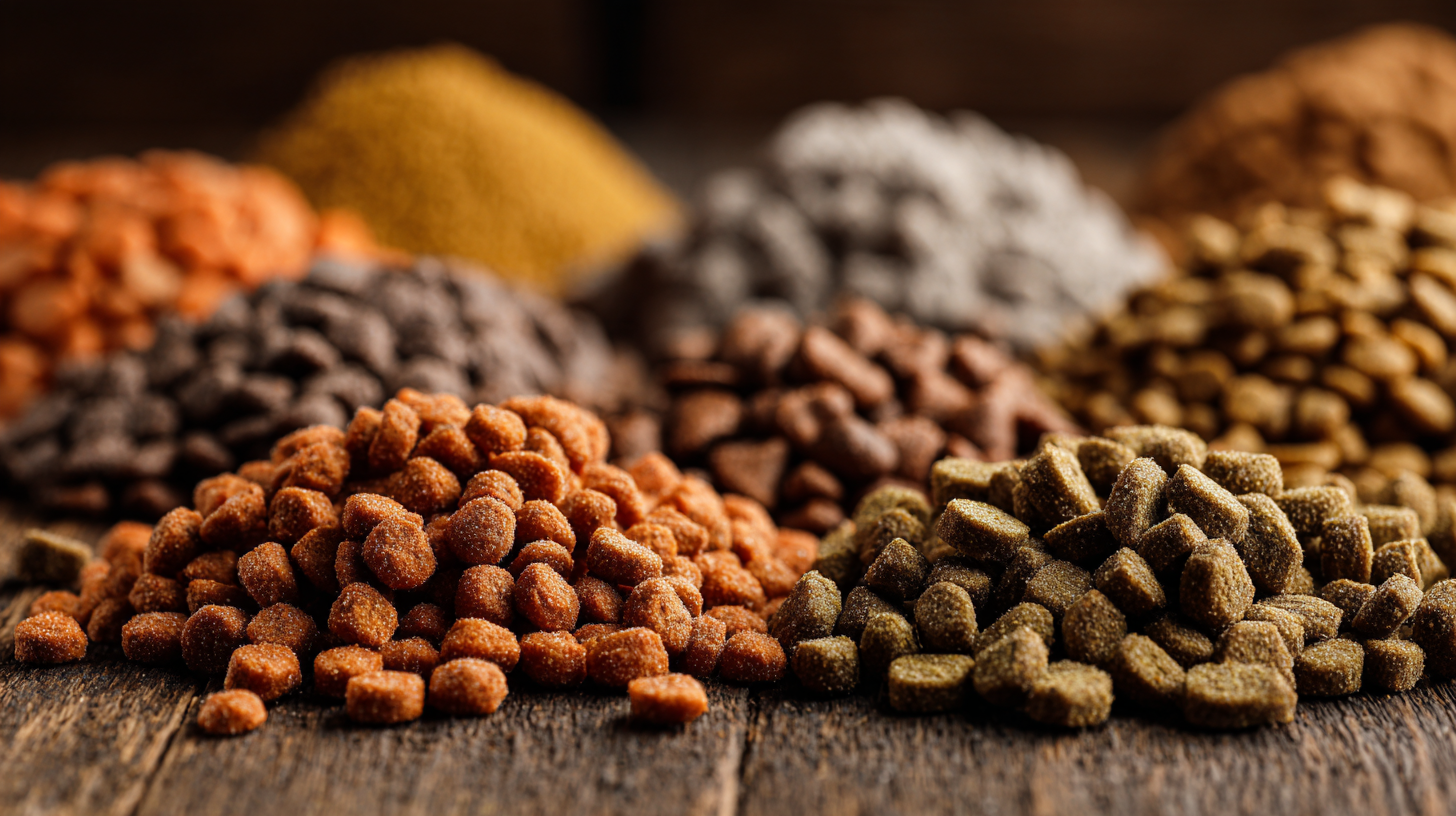 Choosing the right nutrition for our canine companions is paramount for their overall health and well-being, and
dry dog food stands out as a popular choice among pet owners
for its convenience and shelf stability. However, the wide array of options available can be overwhelming, with
various formulations and ingredients to consider. This guide aims to illuminate the alternatives to
traditional dry dog food, exploring innovative options that cater
to different dietary needs and preferences.
Choosing the right nutrition for our canine companions is paramount for their overall health and well-being, and
dry dog food stands out as a popular choice among pet owners
for its convenience and shelf stability. However, the wide array of options available can be overwhelming, with
various formulations and ingredients to consider. This guide aims to illuminate the alternatives to
traditional dry dog food, exploring innovative options that cater
to different dietary needs and preferences.
Whether you're considering grain-free varieties, limited-ingredient recipes, or even homemade blends, understanding the benefits and drawbacks of each alternative is crucial for making an informed decision. By delving into the world of dry dog food alternatives, you'll be equipped to provide your furry friend with the optimal nutrition necessary for a long, healthy life.
When it comes to selecting the right dry dog food, understanding the various types available is essential for optimal canine health. There are primarily three categories: standard, premium, and super-premium kibbles. Standard dog food often contains generic ingredients, which may not provide the best nutrition for your pet. In contrast, premium and super-premium options focus on higher-quality ingredients, such as real meats, whole grains, and vegetables. These can offer better digestive support and overall health benefits, tailored to the specific needs of different breeds and life stages.
Another important factor to consider is the nutritional composition of the dry dog food. Look for formulations rich in proteins, essential fatty acids, and balanced vitamins and minerals. Ingredients like omega-3 fatty acids, sourced from fish oil or flaxseed, can promote a healthy coat and skin, while added probiotics can aid digestion. Additionally, emerging trends suggest that natural and sustainable ingredients, such as those derived from edible insects, can provide a novel source of nutrients. As pet nutrition evolves, it's crucial to stay informed about these developments to make the best choice for your furry friend.

When selecting high-quality dry dog food, it’s crucial to focus on the key ingredients that contribute to optimal canine health. A balanced diet for dogs should primarily consist of high-quality protein sources, such as chicken, beef, or fish. These proteins are essential for muscle development and overall vitality. Look for dog foods that list a specific meat as the first ingredient, ensuring that your furry friend is getting the nutrition they need for healthy growth and energy.
In addition to protein, healthy fats play a vital role in your dog’s diet. Omega-3 and Omega-6 fatty acids, often derived from sources like fish oil and flaxseed, support skin health, coat shine, and cognitive function. Furthermore, incorporating whole grains or alternative carbohydrates such as sweet potatoes or brown rice can provide necessary fiber and energy. These ingredients not only contribute to a dog’s physical health but also maintain their digestive health and keep them active. By scrutinizing the ingredient list, you’ll be well-equipped to choose the best dry dog food that supports your pup's overall well-being.
| Ingredient | Benefits | Source | Commonly Found In |
|---|---|---|---|
| High-Quality Protein | Supports muscle development and maintenance | Meat, fish, poultry | Premium dry dog foods |
| Whole Grains | Provides energy and aids digestion | Brown rice, oats, barley | Balanced dry dog foods |
| Fruits and Vegetables | Rich in vitamins, minerals, and antioxidants | Carrots, blueberries, spinach | Nutritious dog foods |
| Omega Fatty Acids | Supports skin and coat health | Fish oils, flaxseed oil | Health-focused dry foods |
| Probiotics | Promotes healthy gut flora and aids digestion | Fermented ingredients | Digestive support dog foods |
When selecting the best dry dog food for your canine companion, it’s crucial to consider their life stage:
puppies, adults, and senior dogs have unique nutritional needs.
 Puppies require food rich in protein and essential nutrients to support their rapid growth and energy levels. Opt for formulas that are specifically designed for puppies, which offer higher caloric density and appropriate vitamins such as DHA for brain development.
Puppies require food rich in protein and essential nutrients to support their rapid growth and energy levels. Opt for formulas that are specifically designed for puppies, which offer higher caloric density and appropriate vitamins such as DHA for brain development.
Conversely, adult dogs typically benefit from balanced diets that maintain their health without overloading them with calories, helping prevent obesity and other health concerns.
Senior dogs present a different challenge. As dogs age, their metabolism slows, and they may face health issues such as dental problems or decreased activity levels.
For these dogs, it's vital to select food that promotes joint health, such as those enriched with omega fatty acids, and that’s easier to digest. Moreover, the right dog food can enhance their overall quality of life, making them more energetic while managing their weight.
Therefore, when choosing dog food, it’s essential to consider the life stage and specific health needs of your canine friend to ensure they receive optimal nourishment tailored to their unique requirements.
When choosing the best dry dog food for optimal canine health, one of the most debated topics is the difference between grain-free and grain-inclusive options. Recent studies reveal that about 60% of dog owners prefer grain-free diets, believing they are healthier for their pets. Grain-free options often emphasize high protein content and are typically made with alternative carbohydrates like sweet potatoes or peas, which can be beneficial for dogs with specific dietary sensitivities. However, a growing body of research suggests that some dogs may thrive on grain-inclusive diets, which provide essential nutrients and fiber from whole grains such as oats and brown rice.
Veterinary professionals have underscored the importance of ingredient transparency and balanced nutrition when selecting dog food. A study conducted by the Veterinary Nutrition Society indicates that diets containing whole grains can aid in digestion and promote a healthier gut microbiome, potentially reducing the risk of certain health issues. Additionally, grain-inclusive foods are often cost-effective and widely available, offering a practical choice for pet owners while still delivering complete nutrition. Ultimately, whether choosing grain-free or grain-inclusive, it is crucial for pet owners to assess their dog’s individual health needs and consult with their veterinarian to make informed decisions.
Understanding dog food labels is crucial for pet owners who want to make informed choices about their dog's nutrition. Most labels contain a wealth of information, but deciphering them can be daunting. Start by looking for key ingredients listed at the top; these typically represent the primary sources of protein and other vital nutrients. Ingredients are listed in order of weight, meaning the first few ingredients are what the food contains most. Ensure that a high-quality protein source, such as chicken or beef, is among the first few items.
Additionally, pay attention to the guaranteed analysis section, which provides details on the nutritional composition of the food. Look for the percentages of protein, fat, fiber, and moisture to gauge whether the food meets your dog's specific dietary needs. It’s also important to be aware of any artificial additives or fillers, which can detract from the overall quality of the food. By decoding these labels, you empower yourself to choose a diet that promotes optimal health and well-being for your furry friend.